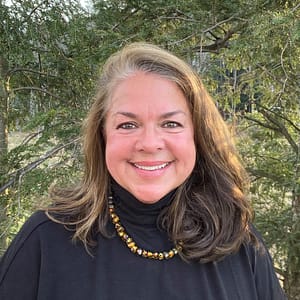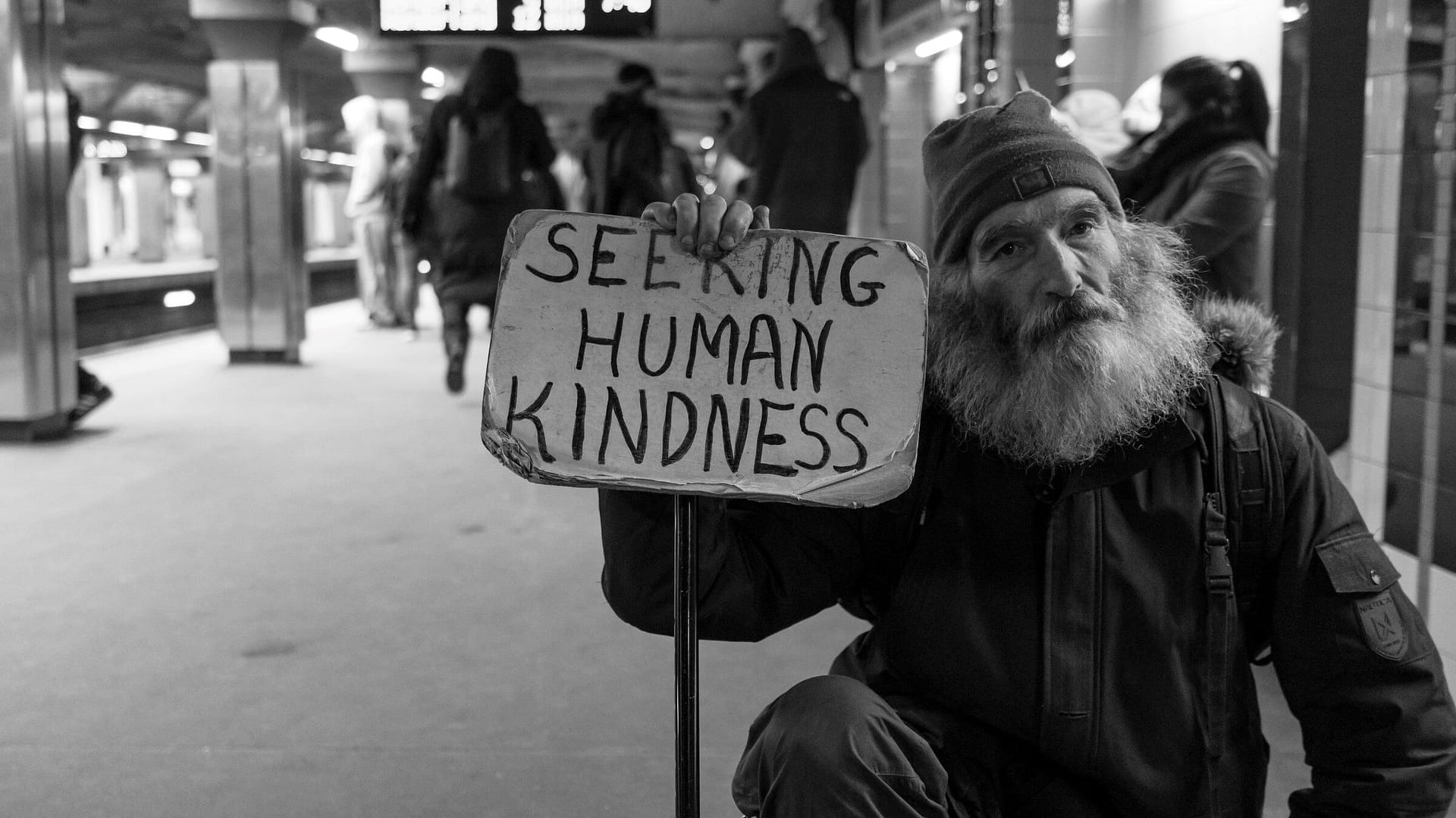This article was originally published in July of 2018.
On July 7th, 1997–when I was twenty-three weeks pregnant with a long awaited second baby– my day began like any other Monday: seeing 20+ patients (I’m a dentist in Northern Vermont), feeding the half a dozen or so orphaned deer (we were rehabbing wildlife that summer), and attending to the whims of a gregarious four-year-old. By the afternoon, though, I really didn’t feel well. I started having some minor contractions that evening, so I met my doctor at the hospital, just as a precaution. As I climbed the stairs to the obstetrics department things seemed to be taking a turn for the worse with every step. And indeed, I was climbing into a future that I could never have imagined. One that would change everything.
I’m Dr. Lynda Ulrich, founder of the Goodness Exchange. Since 2014, we have been publishing articles that prove it is still an amazing world and in some ways, the truth of that sentiment started with this following remarkable photo:
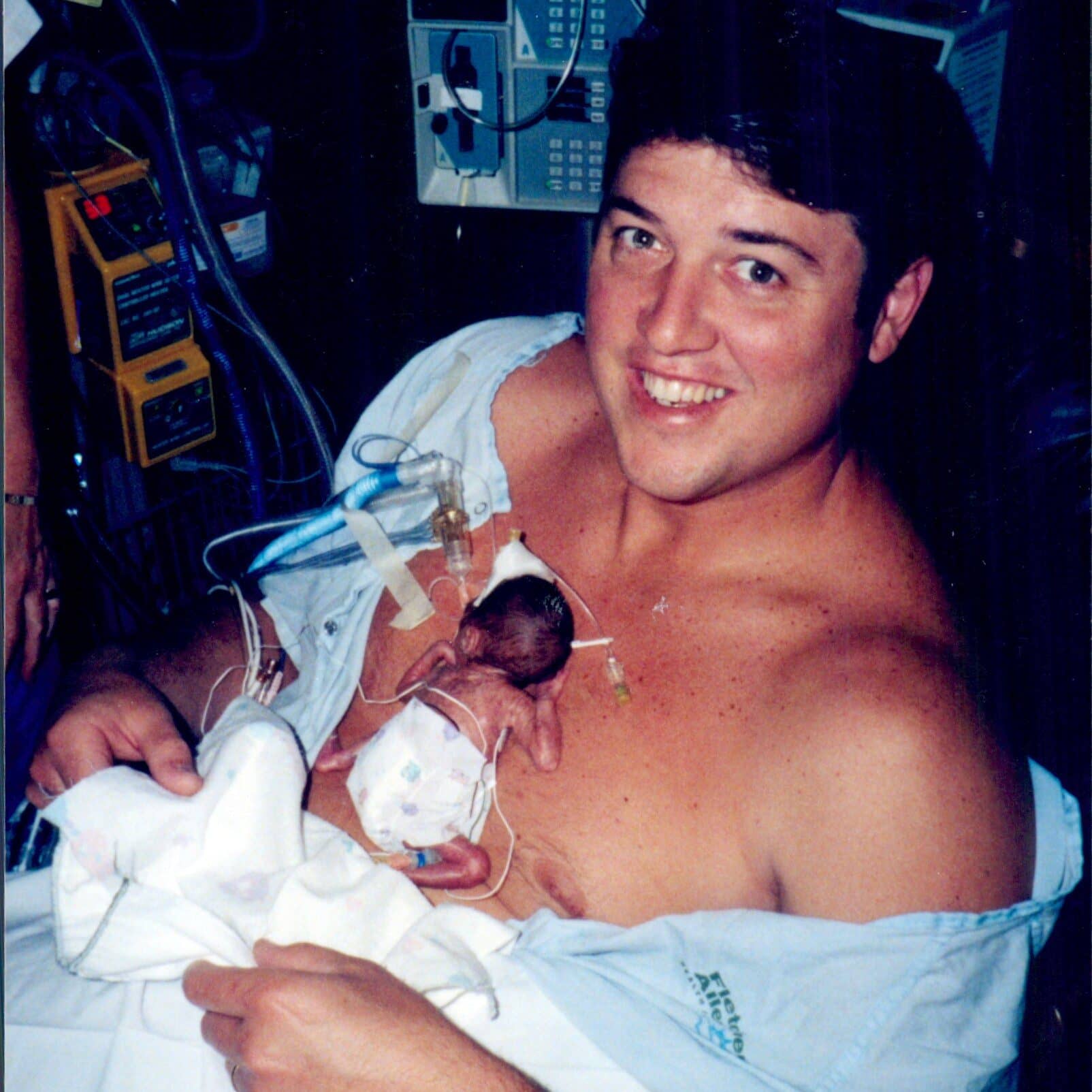
In 1997, my husband, Dr. Chuck Verderber, and I went through what would be most parent’s nightmare: surviving alongside our one pound micro-preemie daughter. The struggle of parenting, the uncertainties of her health, navigating our relationships with friends and family all taught us invaluable lessons about how to handle life, even in the bleakest circumstances.
It’s not a spoiler to say that Louisa, born at 23 weeks 5 days–just 2 days after a baby’s lungs have sufficiently developed to survive–grew up, graduated from college, and even developed a new form of patented green-energy. Her’s is a story of success I wish I could have read as the odds of her survival were presented to me in my hospital bed after she was whisked away to the NICU. Google wasn’t around when Louisa was born, but I’m certain I would have searched for a story of success like hers if it was.
We were told many times that her chance of surviving with no disabilities was essentially zero. We were in the throes of one of life’s ultimate waiting games. Would her hearing or eyesight be severely impaired? Would she have cerebral palsy? Would she ever walk or talk? Would she live through the hardest part only to perhaps later die of a lung infection that her immune system was not ready to handle?
We would not know the definitive answers to those questions for years. Now, we know how that story turned out. Now, we have the pearls of wisdom for us all that can make us wiser, stronger, and happier when we face our own struggles.
So, come with me on a little journey through possibility. I’ll share 12 things we learned that we can all use every day! Many will help you cope, and in some ways thrive, through life’s toughest challenges.
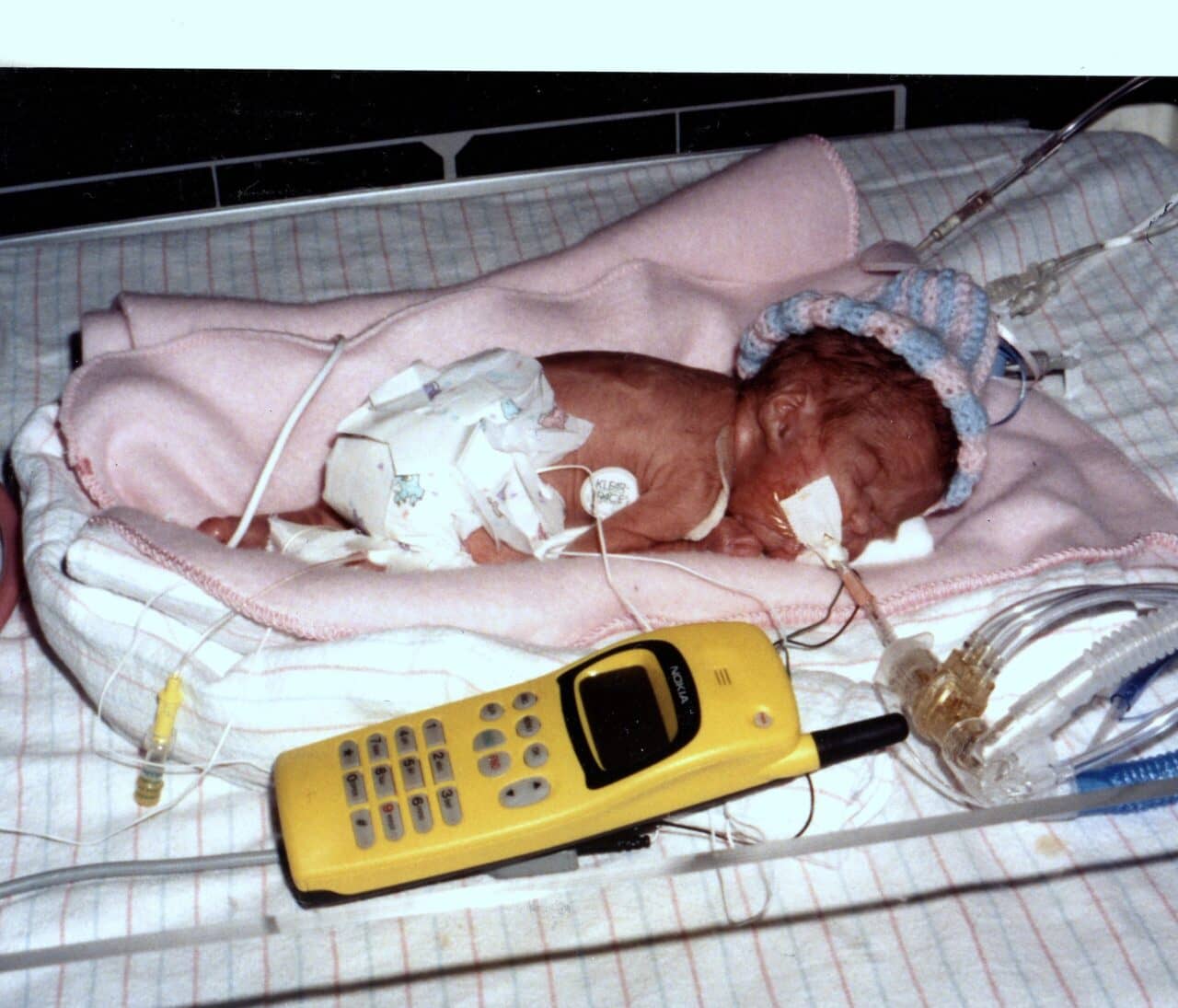
Lesson #1: “Expect the best, plan for the worst and be prepared to be surprised.”– Denis Waitley
If you start from a position of optimism, you can find hidden “possibility” in the most remarkably dark and dire situations.
This lesson is number one because even as our struggle was just beginning, we were taught from day #1 to always consider the optimistic possibilities, no matter how remote. It was a wonder how often we were surprised.
The Joy of a Long Awaited Baby!
In January of 1997, my husband and I had been wanting a second child for 3 long years; dutifully monitoring all manner of biorhythms, hormone levels, body temperatures, etc. So we were thrilled when we learned that I was finally pregnant, and testing had shown we had a healthy baby girl on the way. Louisa was due on November 1st. So, by the end of the 4th of July weekend, we were just a bit more than halfway there. Things could not have been brighter.
A day later, 23 weeks into my pregnancy, something was wrong. It’s here that we pick back up as I made my way up the hospital steps. After my unnerving walk up to the second floor of the hospital, I put on a happy face and made some chipper comments as I met the medical staff. But no sooner had I slipped on the examination gown, I felt something give and a great torrent of fluid splashed onto the tile floor. Everyone in the room gasped, faces fell in sudden, perplexed astonishment. It was a staggering moment that seemed to move in slow motion.
The landscape below my feet was evaporating. My nice, predictable way of life slipped away into a chasm of unknown proportions. After a momentary exam, the doctor sighed and my heart sank. She said she could see two very tiny feet.
There was no hope for continuing the pregnancy; Louisa was on her way.
When my husband, Chuck, arrived at the hospital, we got an abridged fetal physiology lesson and the doctor was the first of many to compassionately tell us that any baby who survived this early of a delivery would have profound developmental problems and this would raise questions about trying to save her.
The sensible thing was obvious: just deliver her there in our rural hospital and hold her until she died (if she made it through the delivery alive). All the while, I should tell you, Louisa was kicking and wiggling as the doctor spoke. She was profoundly and unmistakably vigorous for a baby facing such terrible odds. It was impossible to ignore.
Lesson #2: Always leave the door open for serendipity.
Chance can be a wonderful thing if one gives up control a little bit.
Here’s where “being sensible” lost out to pure serendipity.
As luck would have it, the door to the hallway had been left open just enough for a passing doctor, a pediatrician, to glance in. He recognized Chuck and me so he paused to peek in the door and ask what was up.
I pointed down to Louisa’s tiny, kicking feet. He was amazed and asked incredulously, “What are you going to do?” I said, “What would you do?”
And the future shifted again.
Chance favors the prepared mind.
— Louis Pasteur
He said, “I’ll ride to Burlington with you in an ambulance and we can give her a chance.” (Burlington, Vermont which had a larger hospital and a neonatal unit was just a half hour away.)
By the time the obstetrician came back, we had already hatched a plan and Louisa had a chance at life.
But what if that door hadn’t been left ajar? What if I’d been too modest or made a big deal about the door being closed? What if I had desperately wanted to look “sensible” to my medical colleagues? The answer is simple: Dr. Larrow would never have entered our story, and Louisa would not be here today.

Lesson #3: “Be here now.” – Ram Dass
There will always be time for disappointment and anguish. Don’t start swimming in those waters before their time!
From the minute we hit the maternity floor in Burlington, people were beginning to, unknowingly, give us hurdles which we translated into optimistic goals. The staff would make comments about all the good signs and bad signs. We focused on the good ones and getting through the night, one hour at a time without a hitch.
We played gin rummy and practiced a kind of “being totally present” that we’d learned years earlier from a wonderful teacher. (Needing it for this kind of situation could not have been further from our minds back then.)
I’d heard of people having babies early. They referred to them as “preemies”, often with pride and a sense of wonder. Their parents’ stories were often full of tremendous ups and downs, but by and large, there was almost always a happy ending in the form of a strapping 12-year-old who was captain of the soccer team or the winner of the scholar’s bowl.
The term “micro-preemie” had never made my awareness.
We soon learned that it is a designation reserved for babies born weighing less than 1 pound, 12 ounces (less than 800 grams) or those born before 26 weeks gestation. (A full-term baby takes 40 weeks to develop.) Coming this early, Louisa was at the extreme end of even the “micro-preemie” designation: joining the real world at 23 weeks 5 days gestation, weighing about 1 pound (492 grams).
You would never have known we were facing an abyss by the way we smiled and chatted through the night. (I guess we’d had a really good teacher on that “living in the present moment” concept!)
In those hours, moment by moment, we were grateful for the comfort of our surroundings and the smart people caring for us.
Worrying or anguishing about our situation would not have improved things. The only thing to do was hang on to the possibility in the present moment.
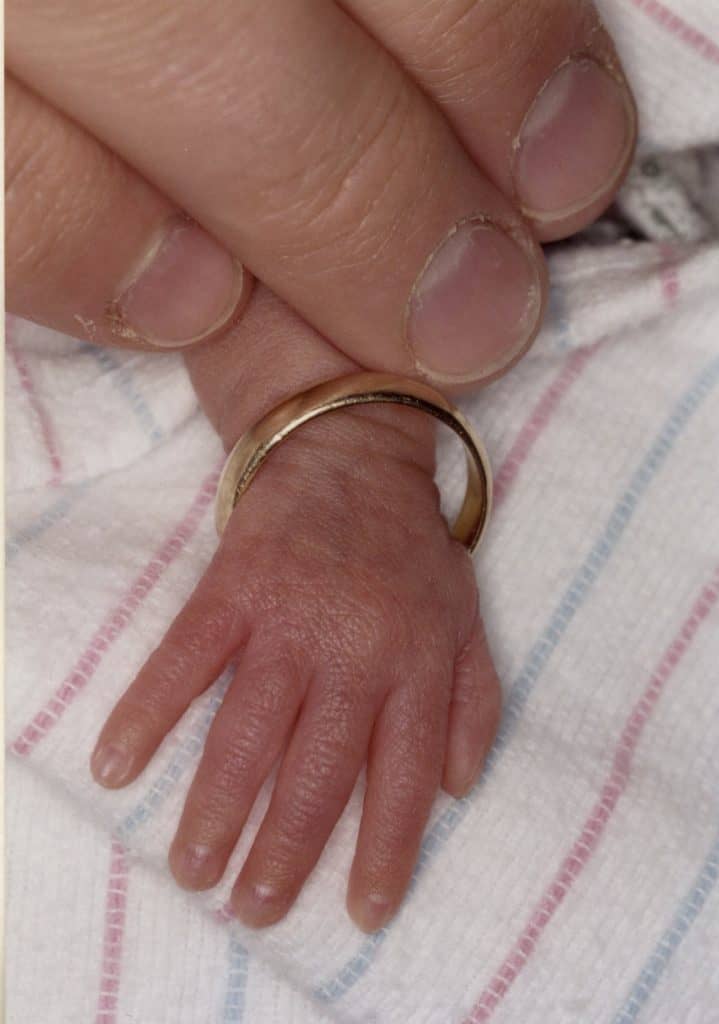
Lesson #4: When a doctor gives you bad odds, keep things in perspective.
Listen carefully but also keep in mind that all the people in that pool do not come to that situation from the same place. (And apply lesson #1!)
Our lack of overt misery seemed to perplex the well-meaning hospital staff. We were not doing the “why me” routine; not trying to place blame, nor grieving ahead of time. It would have been natural for them to suspect we were completely out of touch with our situation.
Periodically, someone would come in to give us the “funeral arrangement talk”. Did we want any attempt made to resuscitate her if she were born dead? Did we want to hold her a while even if she had passed? Would we want to have Louisa brought up to my chest or taken away immediately? Did we want her baptized before they took her tiny body away? Would we want her cremated?
These were questions that would haunt us for months. And these conversations always meandered into a reminder of how badly the odds were stacked against us.
But the night passed uneventfully and Louisa continued to have a strong heart rate and signaled her moxie with periodic episodes of what felt like kickboxing.
And here’s how I processed our bad odds from the onset. I said to myself, “If only 15% of the babies born this early survive, then someone’s baby has to be in that 15%. Why not Louisa?” After all, I was in a top-notch hospital. I was super healthy and strong, and the early testing told us Louisa was too.
Many of the babies that make up the tragic 85% would not have those advantages.
The odds that doctors give people (stats like mortality rates, 5-year survival rates, or recurrence percentages) often include a very large pool of people. Some may have been life-long smokers or substance abusers. Others may have never exercised a day in their life or had chronic illnesses to start with. If you have fewer liabilities than many people in the pool, you just might have a good chance of being in that lucky percentage.
Lesson #5: When you banish fear and anger, you make room for bottomless emotions like love, optimism, curiosity, and hope.
And not surprisingly, things tend to turn out differently!
Around 10 am the next morning, with Louisa still in limbo, I rolled over in bed and I realized that she was much farther down the birth canal than we realized. A quick check confirmed that she was to be born straight away and within minutes it seemed like a SWAT team had descended upon our room: nurses, doctors, respiratory therapists, interns, the gamut!
Louisa was born with half a push while everyone gnashed their teeth in solemn anticipation.
And without a moment’s hesitation, she stunned the whole room when she took a breath on her own and squeaked a tiny newborn cry!
The room exploded with activity as the Neonatal team intubated and stabilized her. Five minutes later she was on her way to intensive care. Our long climb away from the edge of a dark tragedy began.
For the first few days, the team was very reserved about Louisa’s prognosis. She had two nurses assigned to her at all times. We sat with her 18 hours a day and memorized every setting of every pump, monitor, med, and I.V. drip. At times she had 11 different “attachments” on her tiny body.
Each day they would warn us about various impending conditions, and each day we were lucky. That is, until the fourth day, when they diagnosed Louisa with a grade II brain hemorrhage. A condition that often leads to Cerebral Palsy. A follow-up ultrasound, one week later, found that this early pronouncement was incorrect. There had never been a bleed at all.
And there we began the rollercoaster of hope: high highs and low lows.
Here is a photo I took, labeled very optimistically and sent to friends and family at the end of the summer:

Lesson #6: You have to be your own advocate in today’s medical settings.
Don’t be a passive “receiver”. You are most helpful to a loved one, and the hospital staff, if you are respectfully paying attention to the details. Today’s medical teams are often overworked and no one is perfect. If you are also keeping track of the details, you may spot something that doesn’t make sense. Speak up politely and early. It might improve an outcome dramatically, which is a win/win for everyone.
On day 6, we walked into the NICU with a bit of a spring in our step. Things were starting to look up. We had taken the “no resuscitate” order off of Louisa and we had prepared our mindsets for a wild ride.
That day we got it. We were immediately asked to visit “the private room”: a quiet place where bad news is broken to parents and tough decisions are made.
Louisa’s blood sugar levels had suddenly skyrocketed that morning and they warned us that her pancreas might not have been developed enough to function properly. As the doctor prepared us for the worst, we noticed an agitation in an older NICU nurse who had been at Louisa’s side for days. As the day wore on she seemed to be arguing with the doctor over something and the situation was making her more emotional with every passing hour.
Finally, I took her aside to ask what was up. She confided that she thought something was wrong with the IV bag that had been started on Louisa that morning. She said Louisa’s blood sugar was fine until they had hung the new bag. The nurse’s seasoned intuition had told her to suspect something simple and she had spent the day imploring the doctor to allow her to just change out the fluid bag to see if that made any difference. He had refused.
Something snapped in me when I looked in her fiercely compassionate and wise eyes. I didn’t care about “being agreeable and liked“. I switched to “mother lioness mode”.
Finding the doctor, I insisted politely that he order the IV bag changed immediately. He tried standing his ground with me too, but I was having none of it. The bag was changed immediately.
And as to Louisa’s tiny pancreas and soaring blood sugar? Unsurprisingly, that nurse was absolutely right. Turns out the lab had mixed the IV bag in question in error, with four times the sugar Louisa had been previously receiving. As soon as they changed the bag, her pancreas function was perfect.
(Mistakes like that used to happen in hospitals everywhere. Nobody is perfect, but now these systems of digital tracking with wristbands make that very unlikely. Progress is good.)
But from that moment on, Louisa’s father and I made sure we knew as much as we could about her care.
We stopped being the victim of this tragic turn of events and found ways to be helpful, even if that only meant bringing in gigantic vases of cut flowers from our garden every week!
Lesson #7: “In difficult times you should always carry something beautiful in your mind.” – Blaise Pascal
This advice seems almost too simple but try it. Find something that is almost heartbreakingly beautiful to you and commit every aspect of the image to your memory.
Most of us will face some sort of acute struggle or ugliness in life or have to battle our own demons. If you are carrying something beautiful in your mind, it can be a remarkably powerful antidote and it is always within reach.
Now you might be wondering what you actually have when your baby comes into the world only “half-baked”.
Well, you don’t have anything like a plump, bouncing baby human, and yet love is truly blind. We instantly fell in love with Louisa’s tiny, oddly foreign form, with features more like a precious, fragile creature than anything immediately familiar.
She was the same proportions as a Barbie doll. She had fragile, wispy limbs, long fingers smaller than the thickness of a matchstick, and not an ounce of body fat. For the first few days her entire body was covered with soft black fur. Then, as that seemed to disappear, it revealed skin that resembled cellophane stretched over purple beef you’d find in the store.
Louisa’s head was about the size of a small chicken egg. Cup one hand and imagine how a baby’s soft, delicate head would fit there. Oh, and imagine never seeing her face for about the first three weeks. Micro-preemies need to have their eyes covered with a mask and their faces are obscured by the tape that holds the endotracheal tube in place. So for a couple weeks, we had no idea what Louisa’s face looked like.

I remember a dark day in week three when I suspect they thought we were going to lose Louisa to a heart enlargement. They removed all the paraphernalia so I could see her face for the first time. It was like falling in love all over again. There was something deeply instinctual about that moment, like a doe tenderly looking upon her fawn for the first time.
Fortunately, we made it through that day and many others that began with a visit to “the private room”. But from then on, I always had Louisa’s tiny, beautiful face in my mind.
I wish I had better photos for us all, but in those first few days and weeks, no one is celebrating by taking photos. In fact, that first chapter is like a bad dream that you’d want no reminders of.
At yet another wise nurse’s suggestion, we did leave a camera on the countertop knowing that it would be a lot easier for the nurses to commemorate these dark days for us. They told us that we may not be able to look at the photos for years, but we might someday treasure them. It was great advice. Her nurses took the few precious photos that we have.
I can’t say enough about them here. So much of what we learned, how we coped, and the unconditional compassion we have tried to practice for the past 20 years, came from the nursing team and PA’s.
They continue to be among the most important heroes in our life’s journey.
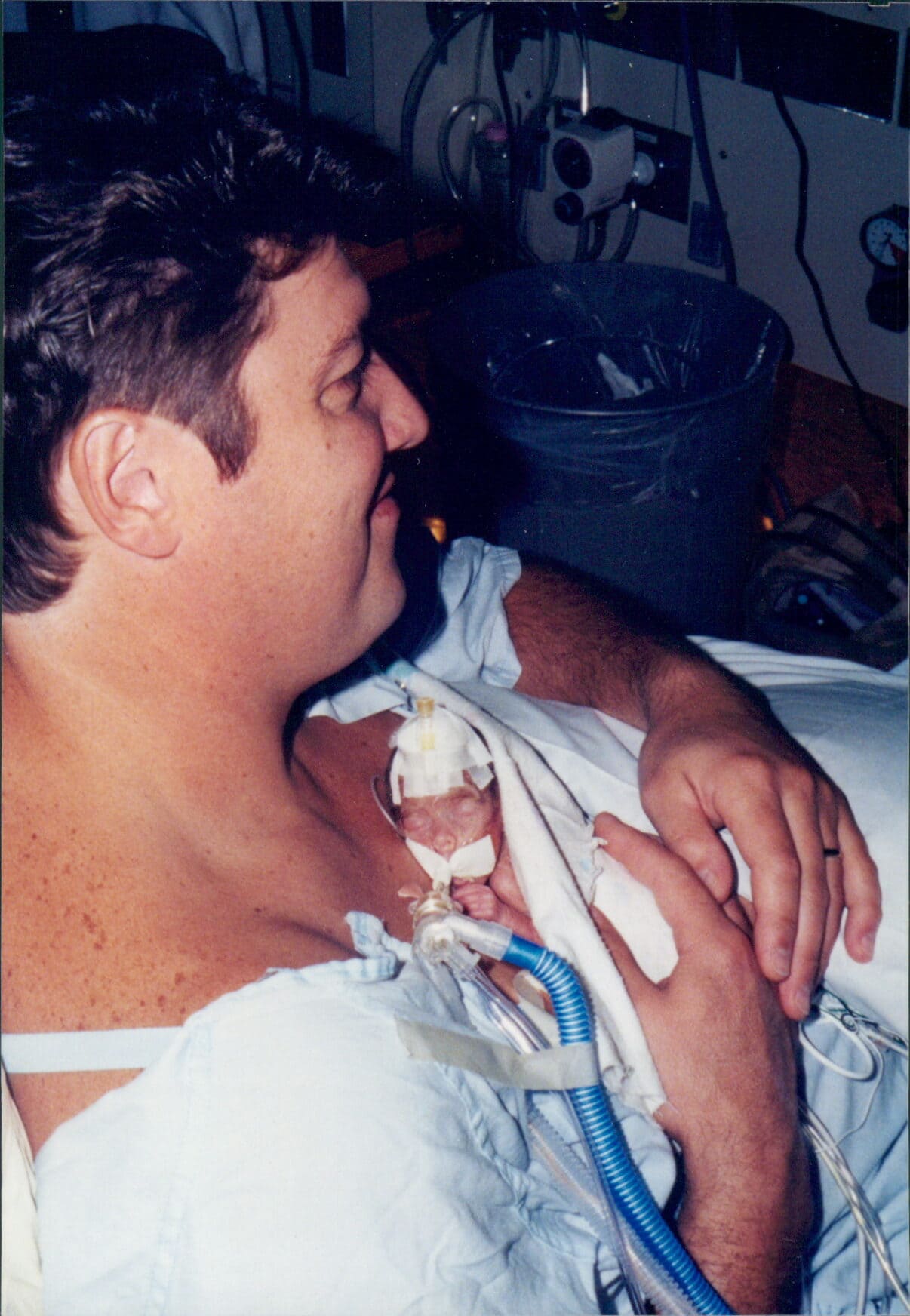
After 3 weeks had passed, we settled into a routine and Chuck and I began holding Louisa every day for 4 to 7 hours. The NICU we landed in was doing something new in those days, called “skin to skin”. They gowned us up and situated us in a recliner near the baby’s incubator and then carefully transfered Louisa to our bare chest to create as much skin to skin contact as possible.
It was a wonder to see her monitor settings come down as she snuggled with us. She always needed less oxygen, and her heart rate slowed within minutes of bringing her to our chests, with her Lilliputian ear able to hear our heartbeats.
Chuck and I would have private contests during the time that we each held her, to see who could reduce her need for oxygen, or relax her enough to slow her heart rate the most. We weren’t “doing” anything—just sitting, being totally present, and perhaps “willing” her to grow and thrive.
I made tiny blankets the size of washcloths for her and would wear them in my bra for a day before laying her on them in the incubator when we could not be there for her. (The sense of smell develops very early.)
We kept this constant contact up for 3 ½ months, without fail. We feel certain it made a measurable improvement in her physiology and encouraged her will to live.
Lesson #8: Sometimes the only thing you can control is your perspective.
If you embrace this notion in your worst (and best) moments you will find paths of strength and happiness that you may never have imagined.
As two ambitious, young professionals (we are both dentists), the intensive care unit was boot camp for learning to manage one’s perspective. It gave us time to practice and finely tune the 12 lessons I’m sharing with you.
Hour after hour, “be here now”. Hour after hour, “hold something beautiful in your mind”. Hour after hour, “never act on the stories you tell yourself.”
I’m not going to go into the many shocking swings from highs to lows throughout Louisa’s stay in intensive care, but suffice it to say that there were many days when there was absolutely nothing we could control but our perspectives. There were 23 transfusions, 3 near misses with possibly fatal infections, and 4 days of critical heart hypertrophy. Louisa’s skin was so fragile that it easily tore when the tape for the E.T. tube was carefully being changed. There were many occasions when Louisa lost her IV lines and the skilled nurses would have to dig for hours in her tiny legs or arms (without anesthesia) to find a blood vessel large enough to accept the IV port.
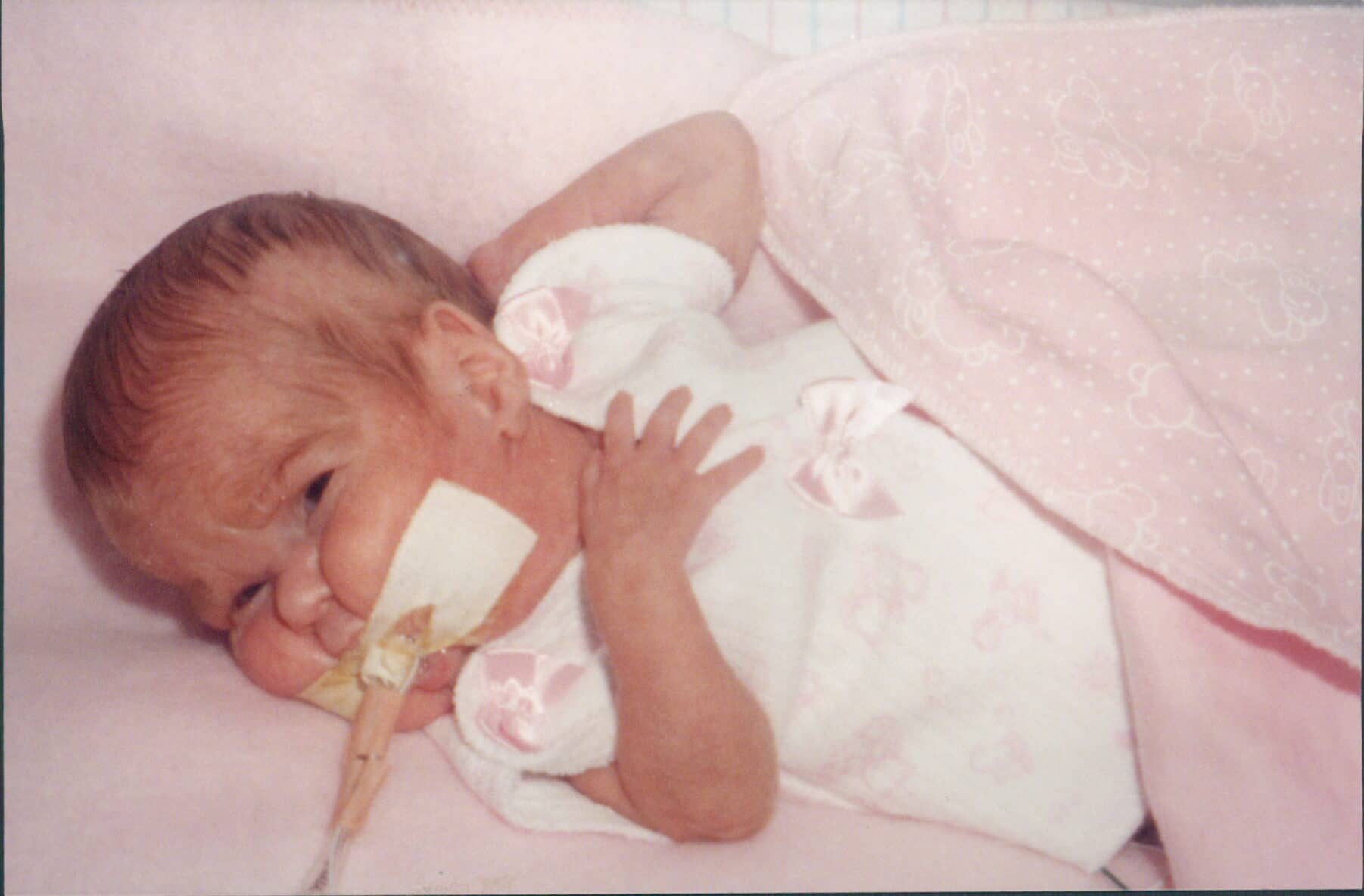
Near the end of our Burlington stay, we were solemn witnesses to the slow passing, over several days, of a baby who had landed in the NICU under her own unique set of circumstances. It was heartbreaking to our core to watch her parents soldier on through one of life’s bleakest landscapes.
And it was a reminder of another path that we might have taken.
One evening, as that tragedy was unfolding, we saw the baby’s father bouncing his own 4-year old with delight on his shoulders in the parking lot. We’ve never forgotten that example of mastering what it means to be truly present and living in the moment.
Louisa spent almost 3 months in the NICU and then 3 weeks in our local hospital.
One day, a week from bringing Louisa home, they called us into the private room one last time. They told that “Poison Control” had to be called the previous night when Louisa had accidentally been given 10 times the amount of iron she needed.
That day, our pediatrician agreed that it was time for Louisa to go home. As it happened it was on what was supposed to be her actual birthday.
And yet we kept learning. Here are some of the big insights that first year reinforced:
Lesson #9: Never act on the stories you are telling yourself.
Much of our train of thought is a runaway train. Be constantly vigilant for the start of that process and scrutinize your assumptions very carefully before acting.
How often do we just let our perspectives run on “driverless”, like a runaway train? How often are we just telling ourselves stories based on assumptions or our worst fears? With no regard for actually getting the facts about what other people are thinking and doing, we just follow the scariest storyline, even when it is the very most unlikely outcome we will face.
Even more, how often do we make major decisions based on the most unlikely, though most frightening, stories we are telling ourselves?
(Like assuming that a baby born at one pound had no chance.)
If we had listened to our fears and the stories, we would have delivered Louisa in our hometown hospital and held her until she died.
Start listening to your own “head talk”. See if you don’t hear a lot of “storytelling” going on in there based on nothing more than your assumptions, which could be very wrong.
It takes practice, but you can eventually override that impulse, and the decisions you make (and your daily reality) may change forever.
Lesson #10: When you are going through the struggle of a lifetime, don’t have expectations for anyone who is close to you.
People will do what they think would be helpful if they were in your shoes.
Unfortunately, they can say and do the darndest things. It’s best to just accept every comment and offer of help as a gift; remembering that it’s the best that person can do in that moment when they are struggling too. Focus on their good intentions.
I didn’t go back to work for a month after Louisa was born, and even then, I was in our office a brief 4 hours a day. Somehow, Chuck managed to keep our dental practice afloat.
We will never forget the outpouring of kindness, well-wishes, and neighborliness that we experienced from our friends, family, patients and the whole community. It seemed that everyone was pulling for us and anywhere Chuck and I fell short there was always someone to pick up the slack. We had a patient come in, ask for my car keys and return the car 4 hours later, perfectly cleaned. We came home to a fully decorated Christmas tree waiting for us on our back porch. People made meals, took Liesl, our 4-year old, on grand adventures. Great friends took care of our menagerie of pets. The list goes on and on.
And there were some disappointments too… that is until we learned a valuable lesson about more gracefully accepting how people will “help”.
I’ll give you a few examples.
My father was an amazing, small-town doctor/surgeon for 40 years: delivered half the babies in town, did house calls, gave everyone his home phone number. He could be as compassionate and wise as a sage. And when I called him to tell him that Louisa had been born so early, the first thing out of his mouth was, “Well, don’t get your hopes up!”
What? I was incredulous. That’s it? That was the best he could do after counseling people in their darkest moments for 40 years?
Well, after I simmered down I came to understand it like this: I was not his patient to be counseled. I was his daughter and he was trying to protect me from all the pain he knew I had ahead of me. He didn’t care about Louisa at that point. He cared about my broken heart, so all he could do was try to buffer my expectations.
It was all that he could think to do to “help” at the moment.
Both of my parents came two days after Louisa was born to take care of our four-year-old, and my mom presented us with a little, wooden “hope chest”, about the size of a robust shoe box, that she had lovingly hand-painted.
It looked exactly like a miniature casket to both Chuck and me. She could not have proudly handed us an uglier reminder of our deepest fears. And for four months it never moved from the place where she set it on our kitchen counter. Neither of us could bear to look at it as it might have been our daughter’s tiny casket.
My mother’s intentions were beautiful. How could she know how we would process that gift?
Lesson #11: Instead of reacting to the flaws of others, focus on their intention.
Most of us have pretty good antenna for picking up on the underlying good or bad intentions of others. Even if someone’s method is poor, if their intentions are good it’s possible to forgive and forget with a great deal of grace.
Some of our best friends never called, for months. One left a message saying, “We are thinking about you, but we know you are constantly coming and going, so we’ll wait for you to call us.”
What? We were crushed.
Another gal came to visit me at the hospital on day #4 and kept me in the waiting room with gossip about everything under the sun for 2 hours, explaining repeatedly that she was “happy to get my mind off my problems for a while.”
Huh? I could not have cared less about who was cheating on who, and what was happening in local sporting dramas.
Another friend, who was a medical professional, came to visit and spent most of the time in tears herself; rubbing my back and trying to help me find that sweet spot between optimism and “being sensible” from a medical perspective, which brought me down lower than I’d ever been.
Again, she is a gem of a gal and wanted to help my broken heart to find peace with what she thought would be a tragic future. I eventually learned to just accept everyone’s good intention.
That perspective made my heart glad even in the strangest situations. I realized that it was what each of them thought they could do to make things better. It’s what they thought they would want if they were in the same situation.
Lesson #12: Got a problem? Run it by a 4- or 5-year-old.
You’ll probably get all you really needed to consider: the kind of straight-shooting common sense you lost when adults made everything so complicated.
The wisdom of pre-schoolers is the world’s most valuable, untapped resource.
We each took 2 meals a day in the car driving back and forth to the hospital in a relay fashion. Most days we only spoke on the phone during the 45-minute drive and passed each other going in opposite directions on the interstate. One of us was home every night to read a story and snuggle with Liesl, our 4-year-old. We made her sense of well-being our 2nd priority and there were occasions, too numerous to count, when she was our emotional lifeboat.
Liesl snapped us out of self-pity, was always quick to point out “the 10,000-foot” perspective, and inspired us to find that we always had more in the tank, even when we thought we were spent.

We brought Louisa home four months after she was born weighing 4.5 lb, no special monitors, medicines, or unique considerations.
A year later, Louisa eventually started to crawl and at dinner time she sat in a high chair with oatmeal smeared from ear to ear muttering “da, da, da, da”. It was the sweetest mantra we could ever hear. It looked like she would come out of this with extraordinary good fortune and beat all the odds.
The years have gone by, and by golly she did!
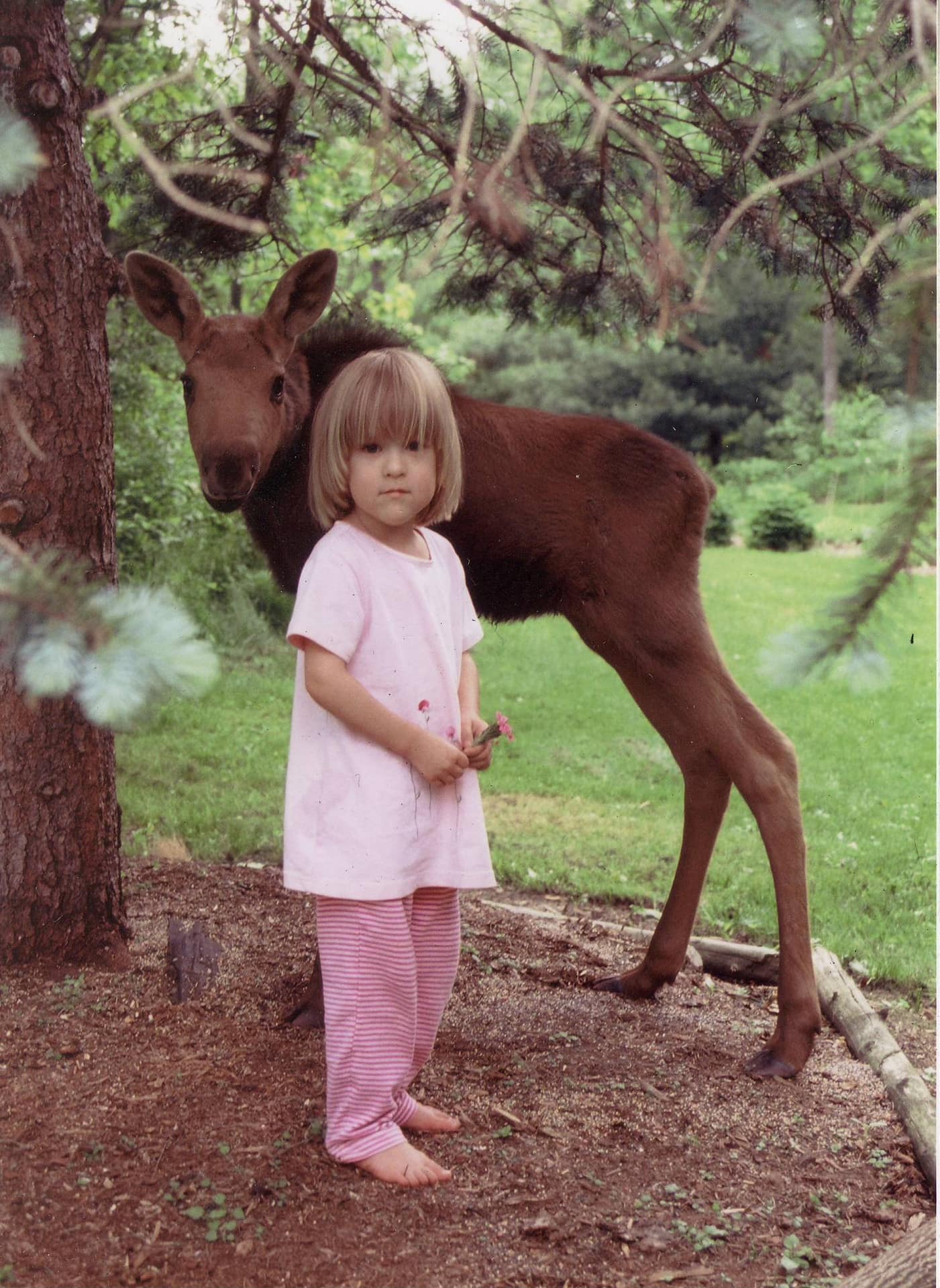
Micro-Preemie Success Story: Louisa Never Made Another Trip Back to the Hospital
By age 5 Louisa showed no signs of vision, hearing or learning disorders. She was of normal height and weight, and her medical chart at the pediatrician’s office contained nothing but regular check-ups and a few ear infections.
Louisa had an unusual aptitude for science and art, that led her to graduate from high school with a provisional patent on an entirely new kind of wind turbine.
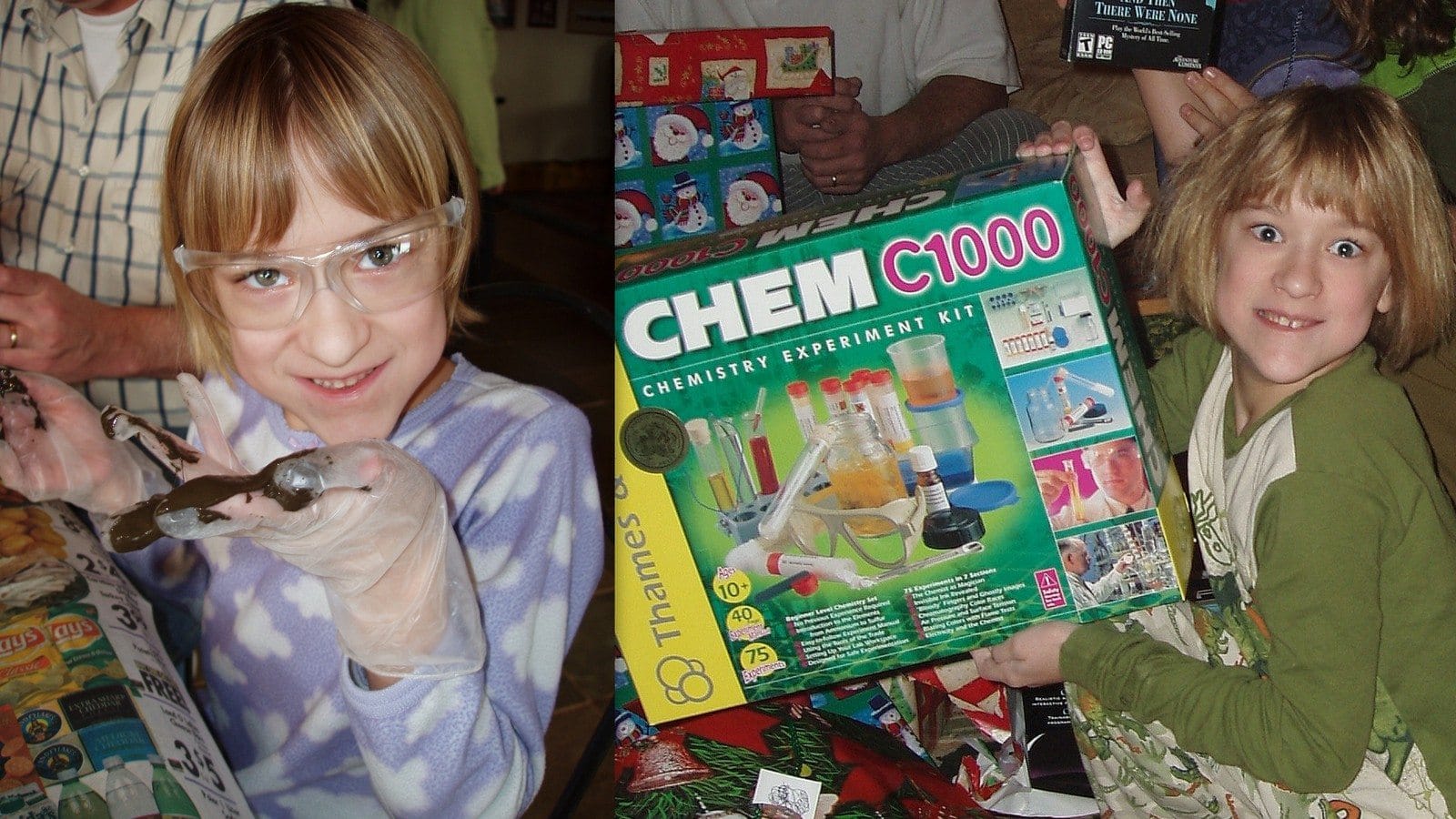
She became a well-known local artist, making gigantic welded metal sculptures, eventually graduated from Clarkson University, studying engineering and management, and turned that provisional patent into an official one. (You can learn a little about that project here on the Clarkson University’s website!)
Here is Louisa today:
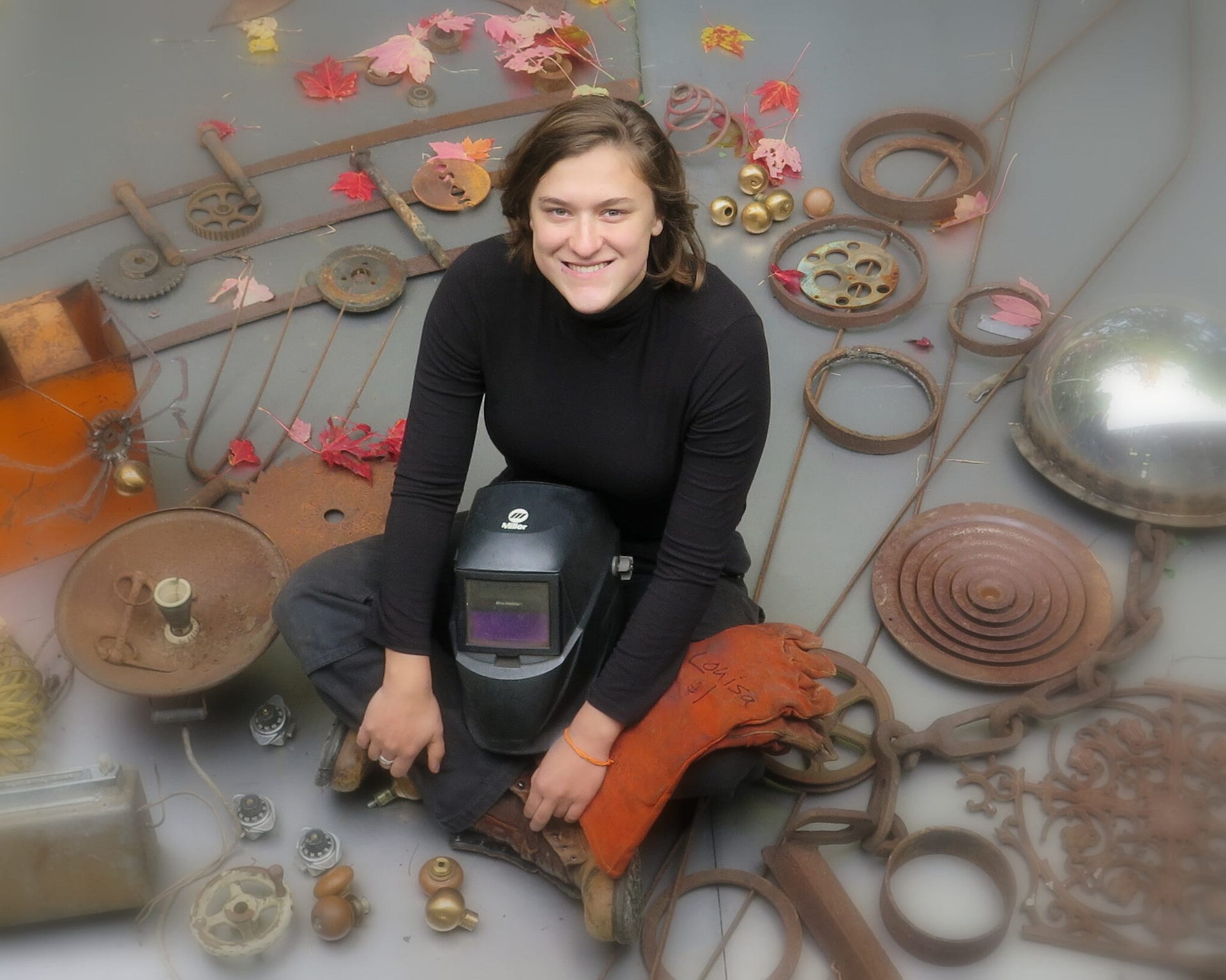
Her mission in life is to “give back” to a world where she has found such good fortune.
She truly believes she was in that tiny, lucky percentile of survivors for a reason.
And we all look forward to seeing what comes out next.
If you’d like to learn more about Louisa’s creative impulses you can check out her remarkable metal sculptures at BEaSPARK.com. Click on the images in this gallery to see the story and more photos of each piece.
Louisa also invented a new way of going through high school that allowed her time for that wind turbine patent and that website is at BeyondTheXtraMile.com. And if you are just a randomly curious person, you’ll love her articles about little-known wonders of nature at ArtOfNoticing.com.
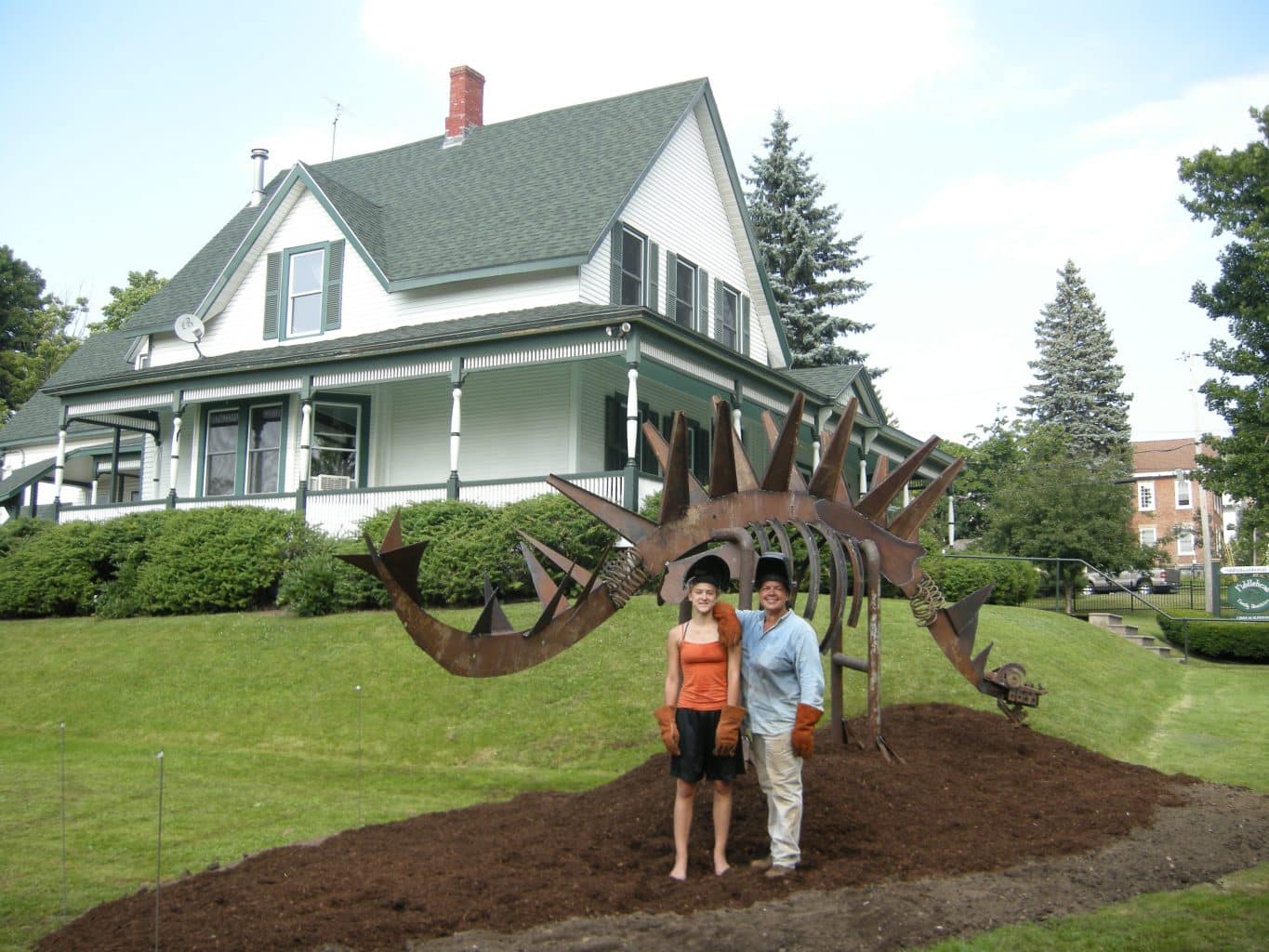

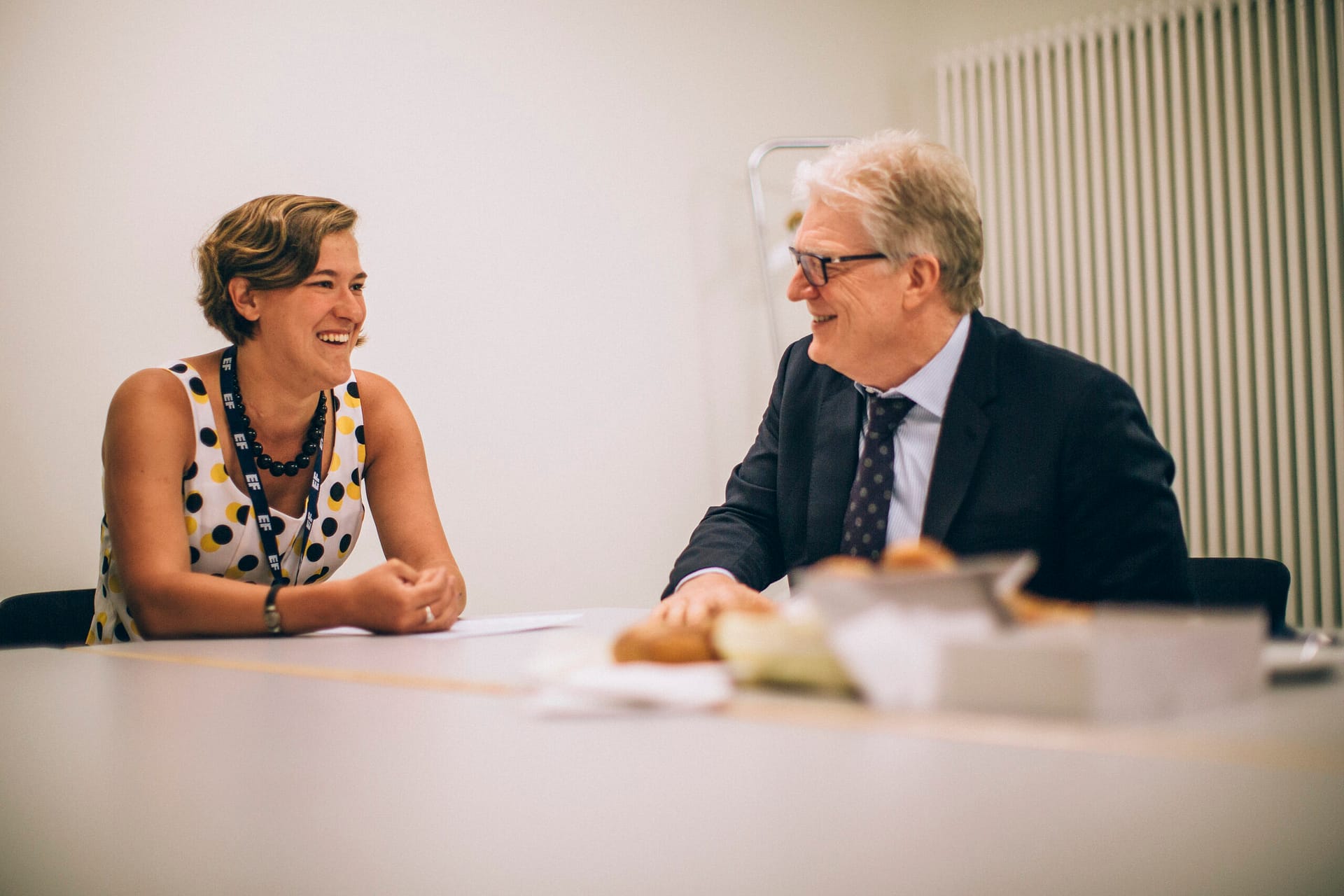

A Bonus Lesson #13: Sometimes the impossible happens.
It won’t happen often and it may not happen to any of us more than once. I often say I don’t buy lottery tickets because I feel like I already won it once.
My story is not the story of most micro-preemies. It’s just one story in a million—and it has a happy ending. These days we need more of those. And, I suspect, we need the hard lessons we might take away from every struggle.
In fact, the website you are on has hundreds of other articles about all the fabulous things that should be making the evening news, but nowadays we can’t seem to hear about anything but politics and nightmares. But that’s all changing!
Today’s article is unusual for its length and personal story. But that’s part of the wonder here. You never know what we are going to bring you. Most days our fans visit us to find inspiring videos that point to the remarkable ingenuity and wonder all over the world.
Best of all, there is no politics, or advertising! This site is a place for everyone to come together.
It’s like hitting the “refresh” button for your worldview!
~ Dr. Lynda
Seek beauty instead of truth and you may stumble upon a lot more beautiful truths!— Dr. Lynda Ulrich

Don’t miss out on a single article!
Enjoy unlimited access to over 500 articles & podcast that give you a positive perspective on the state of the world and show you practical ways you can help.



